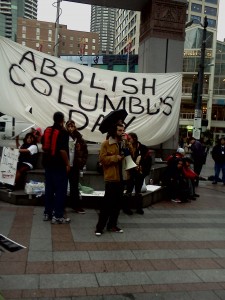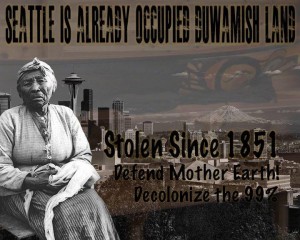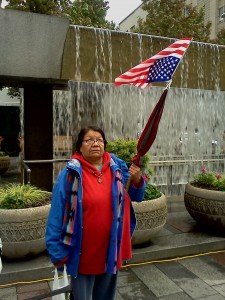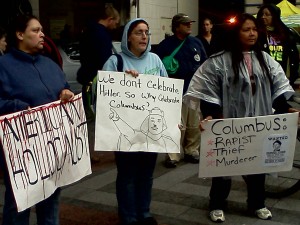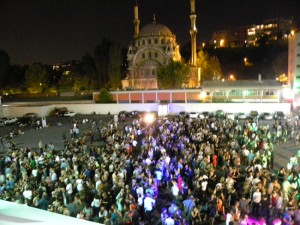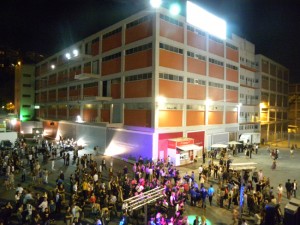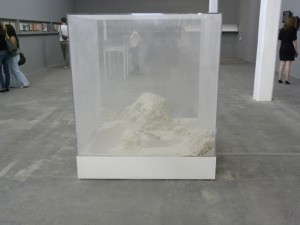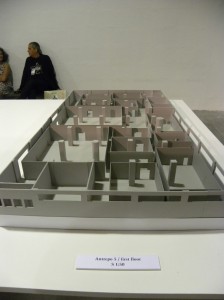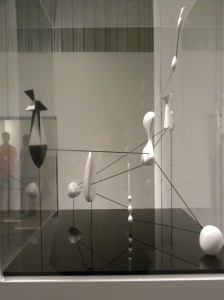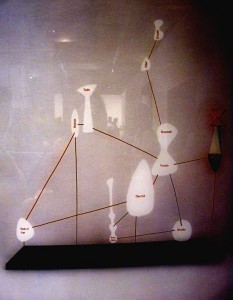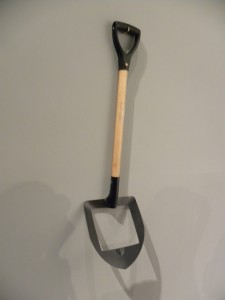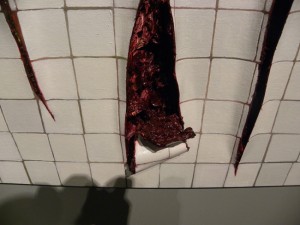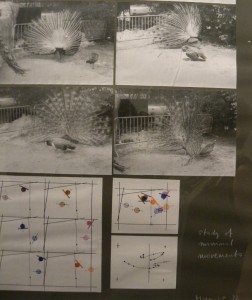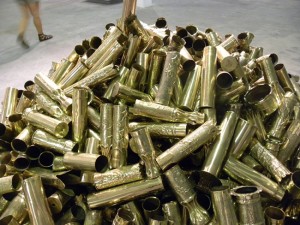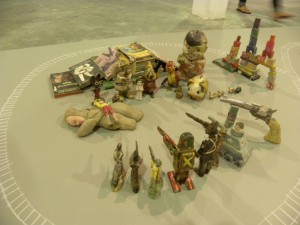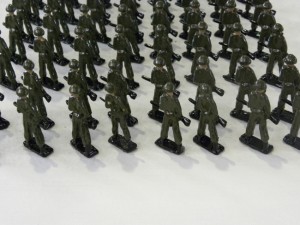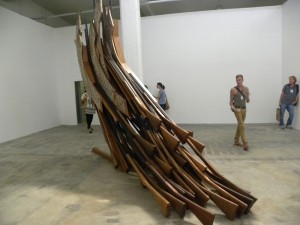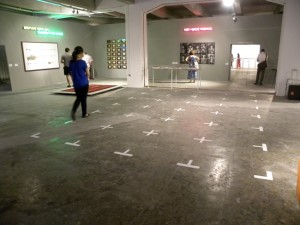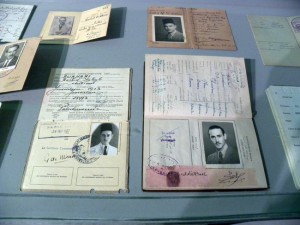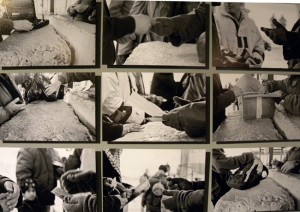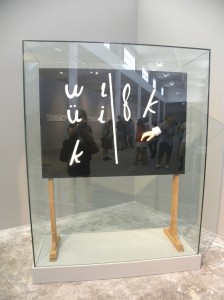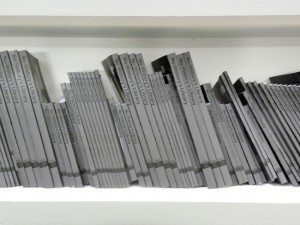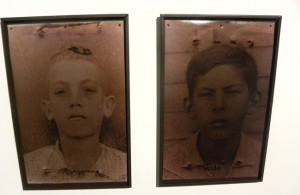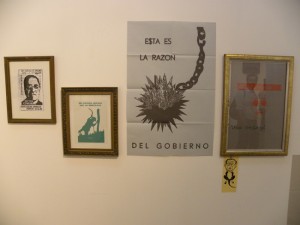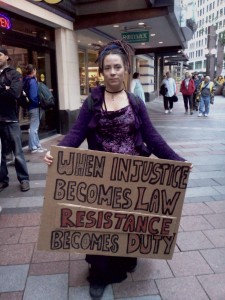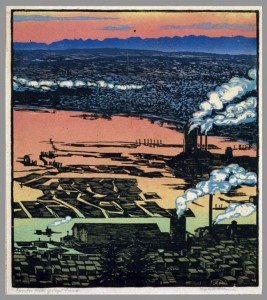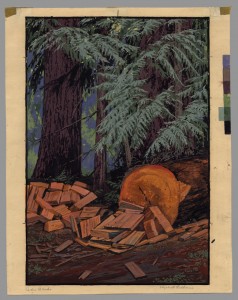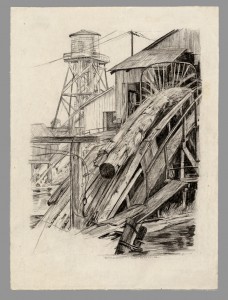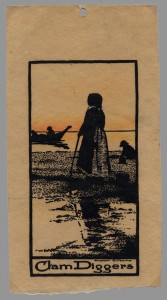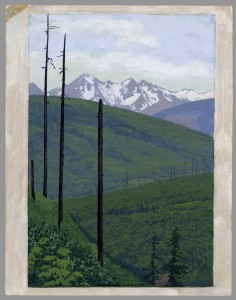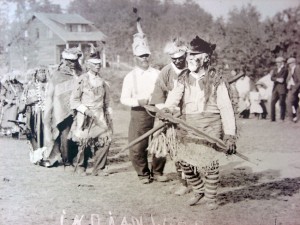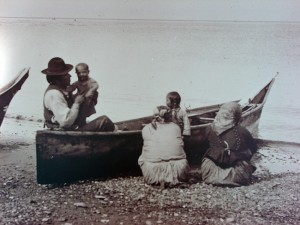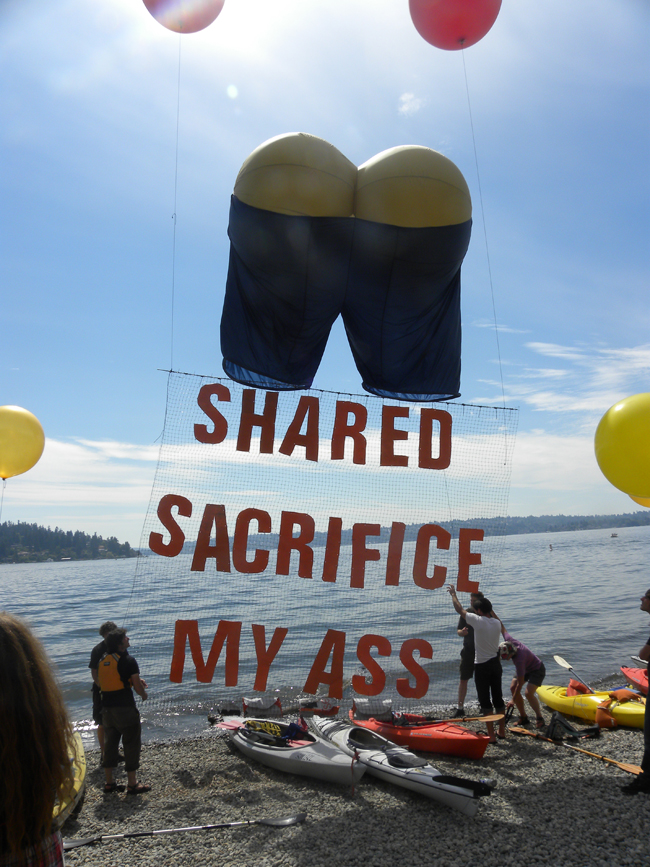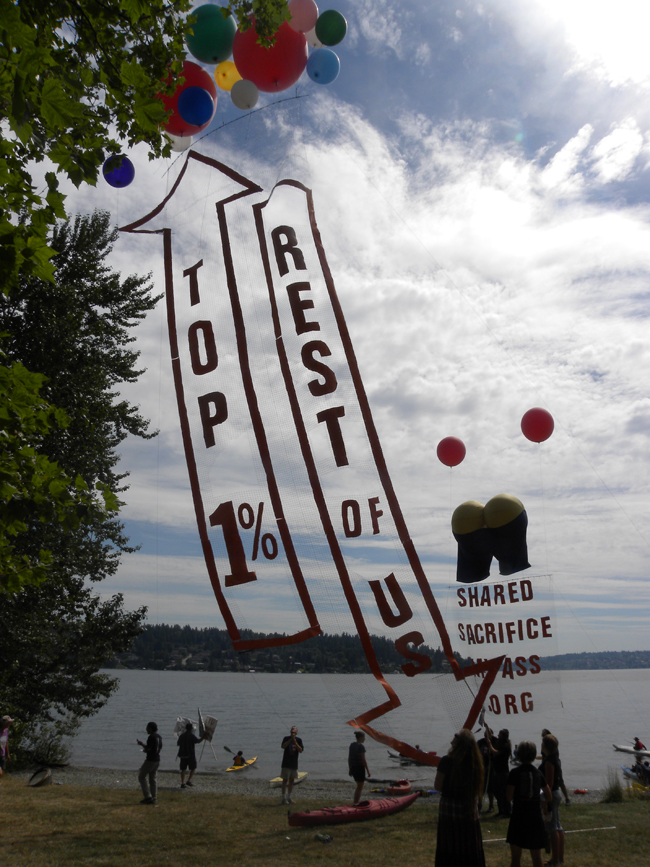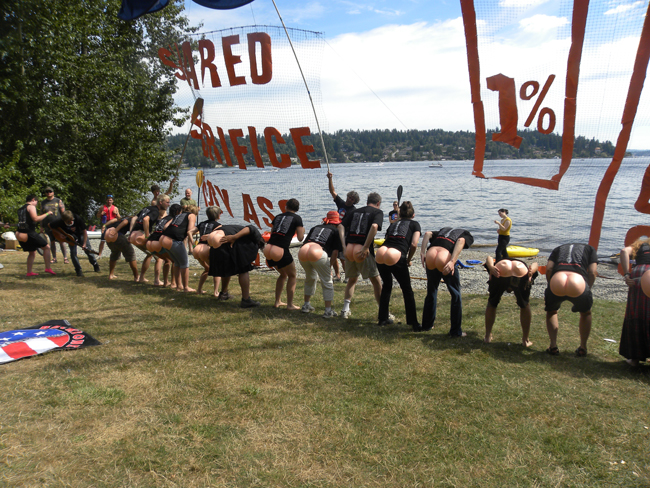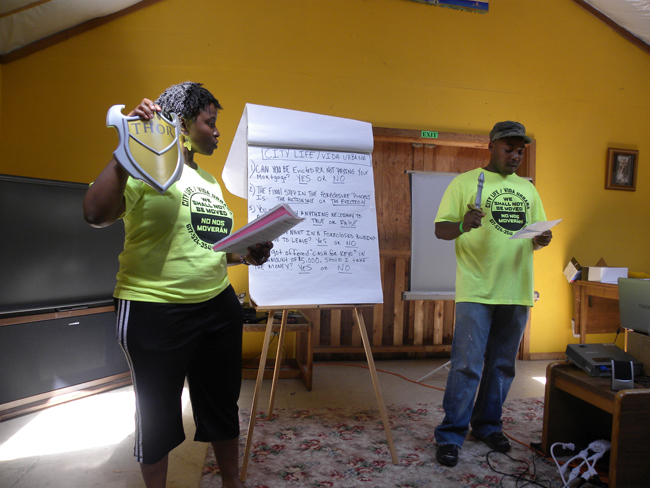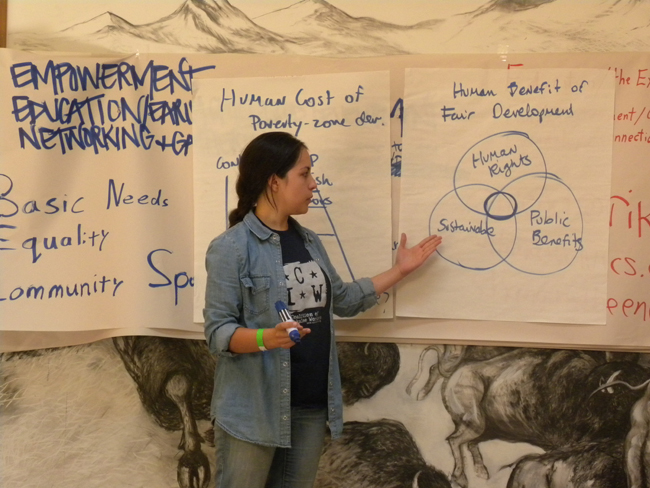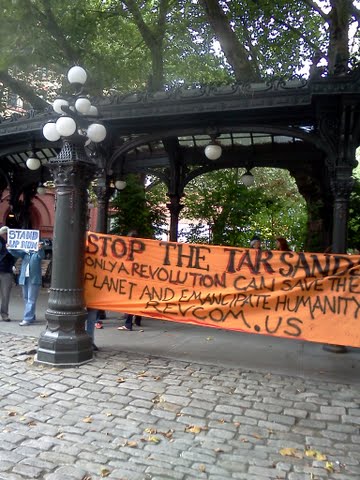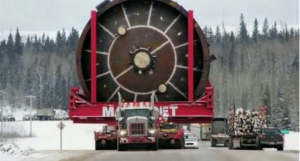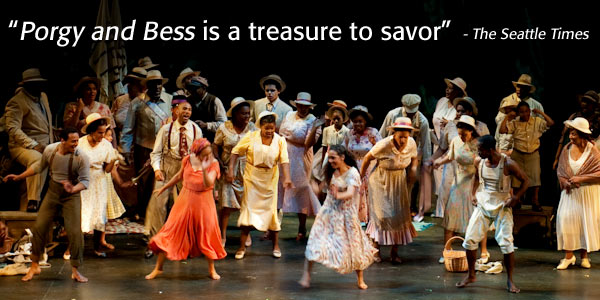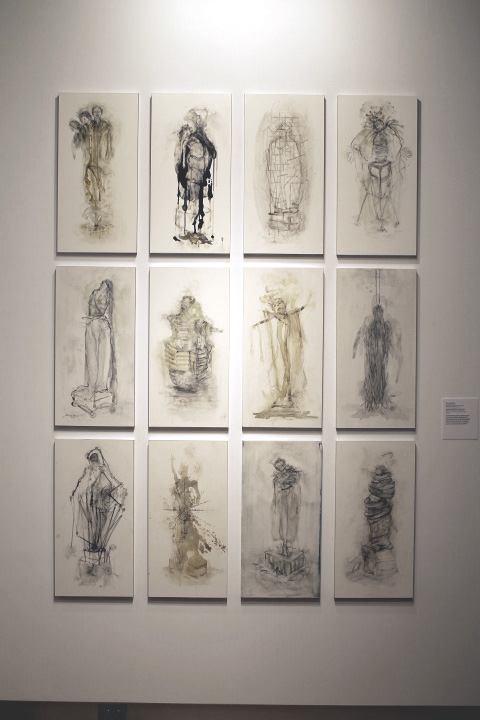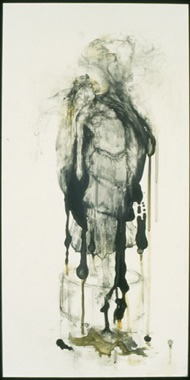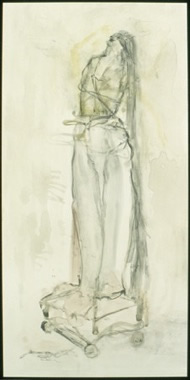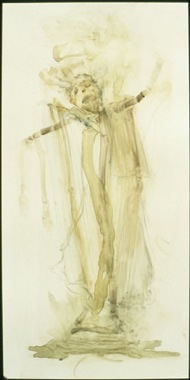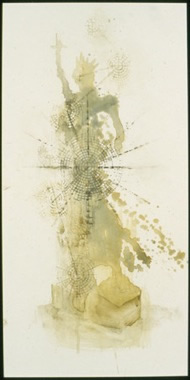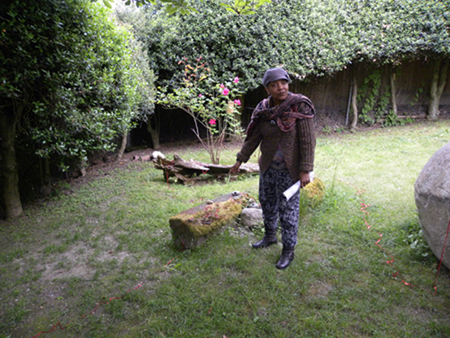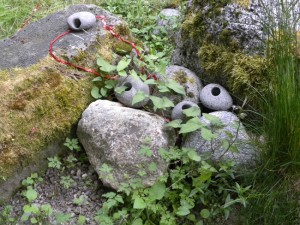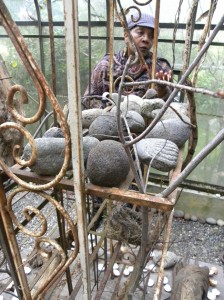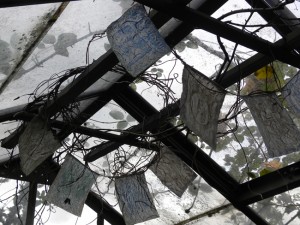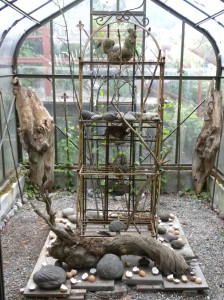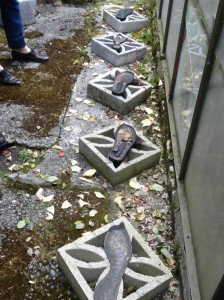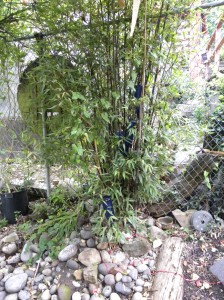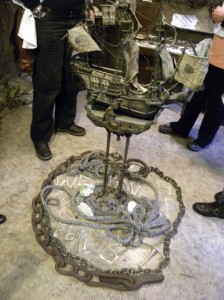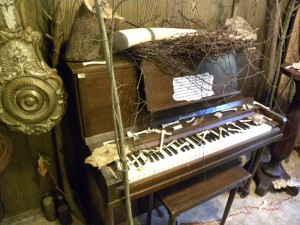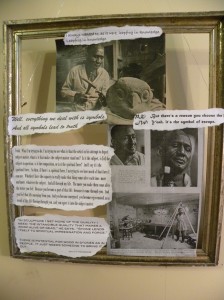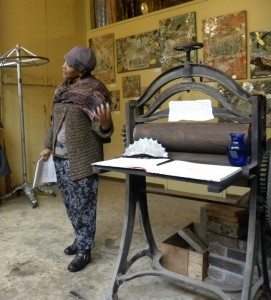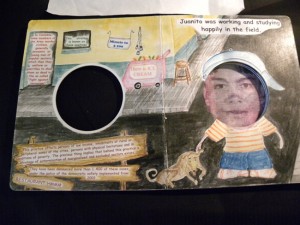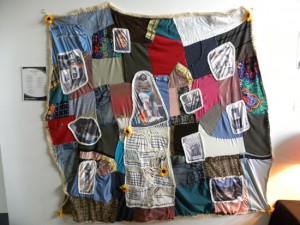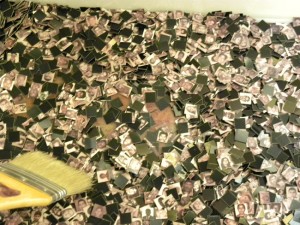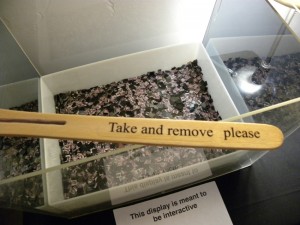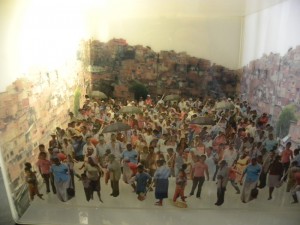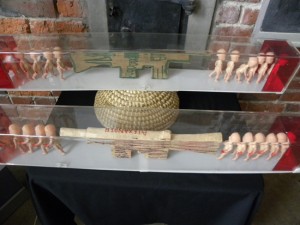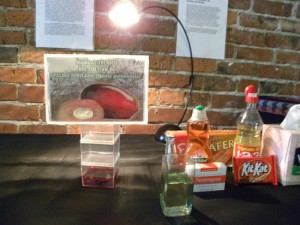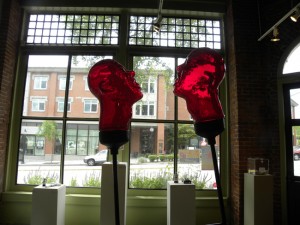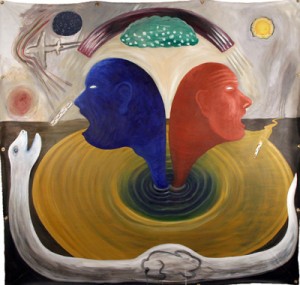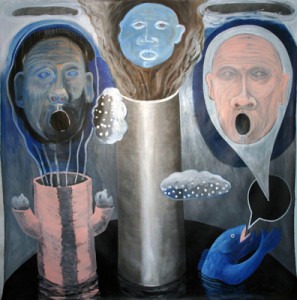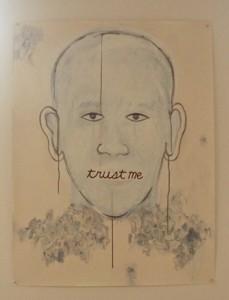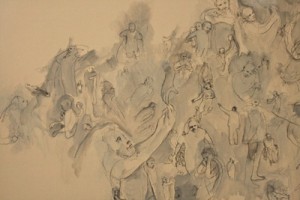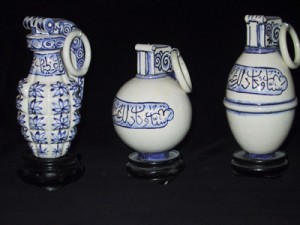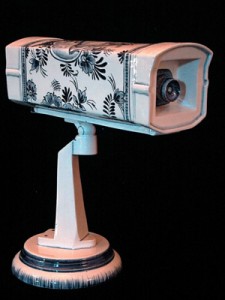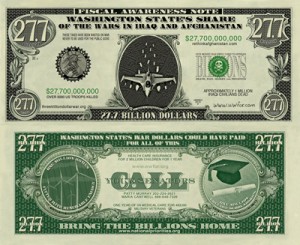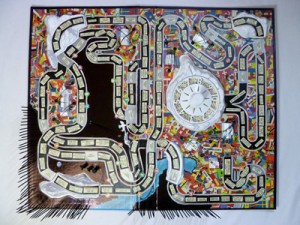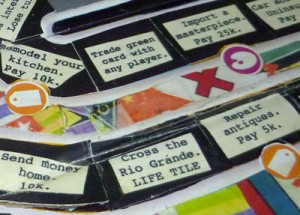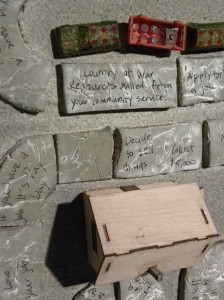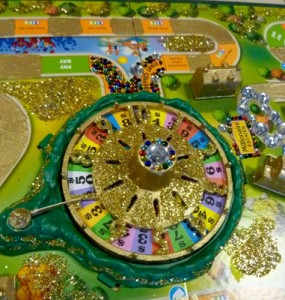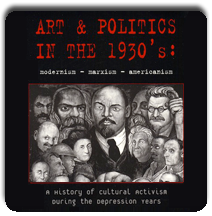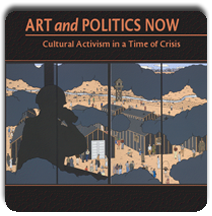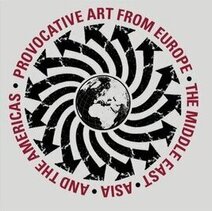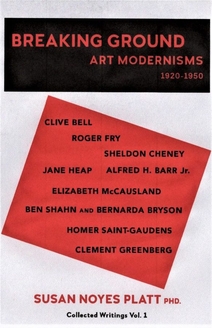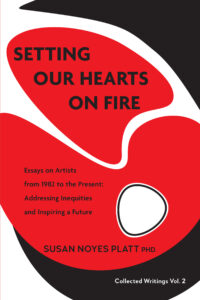Occupy Seattle and Abolish Columbus Day October 12
Today on Columbus Day Indigenous groups turned out at the Occupy Seattle site to demand the abolishment of Columbus Day, there were dances, drumming, songs, and a few speeches. They were also in support of Occupy Seattle on the other side of Westlake.
Those folks were having group meetings about media, peace and justice, and “demands” . Strategizing the way forward. I hope some of them were listening to the speeches especially by Jamal who mentioned the Hopi prediction that those who live in villages of stone will wake up to find them gone. We are waiting for the day. The indigenous have a long view. They see the land as permanently occupied already. So it is a logical connection for them to join up with the Occupy Seattle movement. There was a big discussion about whether to change the name to Decolonize Seattle/Occupy Seattle, the vote was to leave the name the same. Indigenous peoples have played a prominent role in the Occupy Seattle demonstrations over the weeks. Probably more so than in other Occupy places. That has given the Occupy Seattle an historical perspective on the theme of exploitation since the land of downtown Seattle was historically Duwamish, a tribe that hasn’t even been recognized. In this region we have dozens of tribes that are beginning to do better as a result of revenues from casinos and the annual canoe journeys. The first provides new monies, the second build culture and community.
This entry was posted on October 11, 2011 and is filed under Abolish Columbus Day and Occupy Seattle.
Istanbul Biennial Untitled (12th Istanbul Biennial)
The 12th Istanbul Biennial, curated by Jens Hoffman and Adriana Pedrosa offered art that created intersections of aesthetics and politics, both historically and in contemporary art. The curators chose to distance the exhibition from immediate political reality, but the same issues such as pursuit of oil in the Middle East, government oppression and loss of human rights, have been with us for decades. The geo political framework of the exhibition spans most of the twentieth century and the early 21st century. One of the earlier bodies of work is by Tina Modotti, an ardent communist who supported workers’ revolutions in Mexico in the 1920s. She is represented by photographs in the scale, but not the context of her original work: it often appeared on the cover of New Masses. Martha Rosler’s Bringing the War Home: House Beautiful series on the Vietnam War ( rather than her Iraq series of 2004), underscores that obliviousness to the atrocities of war has not changed.
The curators chose to call this biennial Untitled (12th Istanbul Biennial) in homage to Felix Gonzalez-Torres (1957 – 1996), whom they celebrate for his ability to “infuse” the elegance of post Minimalism with political statements. The early 1990s was of course the height of the AIDS crisis and many artists were rejecting the abstruse for direct political statements. In this Biennial works by Gonzalez-Torres create a point of departure for group shows (although his works are only referenced in the catalog): Untitled(Abstraction), Untitled (History), Untitled (Ross), Untitled (Death by Gun), Untitled (Passport). Surrounding these group shows were over fifty solo shows by artists who connected to the adjacent theme show. The design of the exhibition by architect Ryue Nishizawa enhanced this sense of satellites revolving around a central galaxy, with individual gallery spaces defined by corrugated metal walls for each solo artist, But the installation was also a maze.
This was an intentional act on the part of the curators and the architect: they referred to it as echoing the experience of walking the streets of Istanbul. The result was a sense that we could make our own show. We were free to ignore, or return, there were empty spaces between the gallery spaces, there were rooms that led us nowhere or back in a circle.
The first solo show that I encountered, Cultural Diplomacy: An Art We Neglect by Alessandro Balteo Yazbeck and Media Farzin made clear the curators’ intentions and perspectives. It consisted of a contexualization of early 1940s modernism, most specifically the 1943 mobiles of Alexander Calder which he himself described in terms of “cosmic nuclear gases.”
The artists recreate the work, and also alter the original in a photograph by writing on the abstract shapes the names of world leaders who at that time were juggling for influence: Hitler, Stalin, Roosevelt, Truman, Churchill, etc.. They also provide contextual events in 1943 such as the beginning of the Manhattan Project.
The rest of the gallery is filled with other examples that contexualize modernist art with other historical benchmarks and the simultaneous U.S. pursuit of oil and “cultural diplomacy” in the Middle East such as excerpts from Longines Chronoscope of the early 1950s, with experts expounding in much the same way that they do today, diagrams of the oil fields on Iran and Iraq from the Cheney Energy Task Force( whose shapes reminded the artists of a Calder mobile), and a 2006 article by Seymour Hersh in the New Yorker “The Iran Plans.” Nothing has changed in the US perspectives, but as Z magazine stated recently “As the Arab Spring continues to challenge dictators, demolish old structures and ponder road maps for a better future, the U.S. remains committed to its failed policies, misconceptions, and selfish interests.” (Ramzy Baroud, “U.S.-Arab Disconnect: Revolutions Restate Region’s Priorities,”) October 2011
The group exhibition Untitled (Abstraction) was the least provocative in terms of art and politics. Historic figures like Lygia Clark and Lygia Pape were juxtaposed to recent artists who frequently did riffs on familiar works such as the shovel ready -made by Duchamp. Clara Ianni’s Trabalho Abstrato (Abstract Work/Labor, 2010 was a shovel with a square hole cut into it, thus rendering it useless and a play on the Marx idea of “abstract labor.”
Adriana Varejao transformed abstract slashes inspired by Lucio Fontana into a depiction of literal wounds.
But among the solo shows affiliated with the abstract section , the work of Dora Maurer, an Hungarian artist who began to create conceptual art in the early 1970s in the midst of oppression and communism, again provides the contradiction of context and production that can be so provocative. Her subtle conceptual pieces were an active protest against the world in which she was living ( she is still a major contemporary artist in Hungary.)
The Untitled (Death by Gun) group show swung between absolutely literal representations to historical images that did not gain by their loss of context. Some artists recreated intense experiences of the past, as in the video work by Edgardo Aragon who hired his young cousins to re-enact rituals, games and killings that actually happened in his family when they were involved with organized crime. Mat Collishaw’s giant photograph of a bullet wound was so confrontational that it became sexual and abstract. This installation included iconic historic images like “Matthew Brady’s” ( done by various members of his studio)photographs of the Civil War. It juxtaposed the photograph by Eddie Adams of a street execution of a Viet Cong fighter with the equally well- known image of Chris Burden being shot as an art performance. What does this tell us? That the art world is effete, or that this shooting was part of the pervasive gun culture of this time that continues to the present.
Even the contemporary work had historical references: Kris Martin’s Obussen II, used huge ornately decorated howitzer shells from World War I, and Kristen Morgin’s The Third Of May, reenacted the famous Goya using clay models of Pinocchio and Mickey Mouse as victims of the firing squad.
Are the curators avoiding the realities of death by gun in the present? With the choice of Ali Younis with his hundreds of toy soldiers,
or Eylem Aladogan’s gun stack that morphs into feathers,
they opted for the literal, but it feels like a mannerist literal. Even more literal and yet more than that are the photographs of Letiizia Battaglia done while she was working as a photojournalist in Sicily in the mid 1970s: the dead victims of Mafia hit men are unmediated and blunt. There is a direct connection between these Mafiosi murders and the targeted murders coming from camera phones in Afghanistan and Iraq or the unphotographed murder of unarmed “enemies” like Osama Bin Laden and Anwar al-Alwaki by drones.
Situated between the stark dialectic of Untitled (Abstraction) and Untitled (Death by Gun), lie the three other group shows: Untitled (Passport) Untitled (History) and Untitled (Ross) –the third name refers to Gonzalez-Torres’ lover who died of AIDS. This section addressed themes of love, identity and sexuality and was the most historically focused and least provocative in terms of contemporary choices of work.
Untitled (Passport) lent itself to more subtle negotiations between aesthetics and politics. Several artists included resonant passports: Sue Williamson’s For Thirty Years Next to His Heart (1990) was a passbook for black South Africans; two Palestinian artists Dor Guez and Baha Boukhari referred to the constantly changing status of Palestinians.
Rula Halawani’s Intimacy, are close up images of people’s hands as they get out their documents at a checkpoint at the Qalandia checkpoint between Jerusalem and Ramallah ( Halawani’s black and white photographs in the “history” gallery juxtaposes contemporary ruins to historic photographs of villages in Palestine.)
Untitled (History) included Aydan Murtezaoglu’s well known work referencing Ataturk’s teaching Turks the Roman alphabet in the late 1920s as part of his language reform, as well as many works that utilized archives, books, and other documents to underscore the incompleteness and arbitrariness of what is included in history.
Some seemed a bit pedantic, others more compelling such as PAGES reconstituted a shredded letter from an American diplomat at the Iranian embassy just before the student take over. Volupsa Jarpa Library of No History based on declassified CIA documents referrng to Chile between 1968 – 1991 was mainly an unreadable aesthetic.
There was again an emphasis on the aesthetics of the printed page, the redacted printed page, the shredded book, the book turned into artwork.
Altogether the exhibition was elegant and provocative, as with all biennials, there were artists included that were astonishingly weak,. The unusual choice to emphasize historical work to such a great extent, as well as an obvious predominance of Palestinian artists (The Ford Foundation provided funding to include Arab artists) and an almost absence of American artists ( a cut in the US budget?) also points to other hidden political agendas that are not even mentioned in the exhibition, but which certainly framed it.
I had some favorite pieces including Taysir Batniji’s Watchtowers, Israeli guard towers in Palestine that directly quote the industrial imagery of Bernd and Hilla Becher in Germany, but with obvious differences: these photographs were taken by a surrogate photographer in a hurry, they are illegal images, and they are not derelict at all.
Rosangelo Renno’s Immemorial also invokes modernism in its grid structure, but that impersonal geometry is abruptly interrupted by the faces of young men in a series of photographs that Renno found in archives: they are young men who died building Brasilia.
Underlying tragedy is more indirectly invoked in the Camilo Yanez video of the National Stadium in Santiago, site of both heroic and horrific events . We see rolled up cubes of grass and crumbling seats as the history of the place disappears. Simryn Gill’s series My Own Private Anghor, also documents the collapse of modernism in hauntingly post minimalist photographs of abandoned window panes in empty unfinished houses in Kuala Lumpur. Abraham Cruz Villegas collection of political posters from various intense events in Mexican history and Elizabeth Catlett ( who is still working, but whose aesthetic was shaped in the 1930’s and 1940’s) also look backward to a time when artists directly engaged events.
While continuity with the present can be argued throughout this exhibition, its emphasis on both the literal and the abstractions of historical modernism, particularly conceptual and minimalist structures created a strange dynamic between the current burning state of the planet and the place of art in that discourse. Artists can engage directly with what is happening now, but in choosing this historical and aesthetic route, these curators suggest that the examples that have withstood the test of time can speak to us almost more directly, than a piece responding to the immediate event.
And, indeed, this split of the literal and the abstract is actually where we are now. On the one hand, drone warfare replaces human beings on the ground. The computer screen replaces the equipment in the field, the concept of war itself has become abstracted into perpetual war on terror. The defined wars of the past, with their titles, places, historical beginning and end, are definitely a relic of the black side of modernism. Today we have permanent war, word play, no social participation in the idea of sacrifice for a war, all of it making for a permanent abstract background to our daily lives, a background that many people don’t even bother to acknowledge as the single biggest fact of our contemporary world. This biennial is a bit like that: it includes a lot of abstraction that is post minimal framed with political discourses, but in the end, the world of politics is background to the elegance of the works, and is often even invisible. On the other hand, we have the extremely literal and specific protests occurring around the world by masses of people who have nothing more to lose.
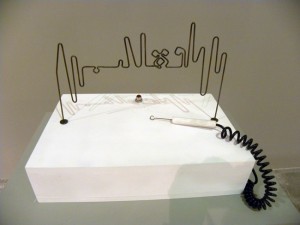
Homayoum Askari Sirizi "They(masses) absorb all the electricity of the social and political and neutralize it" (After Baudrillard)
This exhibition offers a new variant on the theme of art and politics. Some critics and the curators themselves are saying that it is a reaction to the more specific art and politics of the last three Istanbul Biennials. They are trying to move the equation closer to aesthetics, which in their definition is late modernism.
That may explain the pervasive sadness that I felt. For in reaching for modernist aesthetics, they are reaching for a lost cause, a failed project, a twentieth century dream. Today, we need something entirely different, and that is actually being formed on social media, with mass connections of disenfranchised and economically bankrupted youth, workers, unionists and with protests like those in Wisconsin or in New York City. Occupy Wall Street protests against the dictatorship of the corporations; protests in Egypt and elsewhere in the Middle East are against ruthless political dictators often backed by the US. So against the abstraction of drones and warfare we have the physical messy, open, people based multi media, multi issue protest against oppression and the economic systems of exploitation and war that drive it. That is the contemporary dialectic of art and politics. Where it leads us is still to be discovered.
This entry was posted on October 4, 2011 and is filed under Istanbul Biennial 12.
Istanbul Biennial 2011
This is the beginning of my analysis of the Istanbul Biennial which has the title “untitled” based on the work of Felix Gonzalez-Torres, who titled his work “Untitled” then added a parenthesis with a particular reference. In the Istanbul Biennial 2011, the curators made five group shows with the following references untitled(abstraction), untitled(Ross), untitled (history) untitled (passport), untitled (guns). The overall theme was the possibility of undermining the distance of modernism with political contexts. The range of political content went from extremely literal to absolutely abstract. Indeed the exhibition is a veritable encylopedia of different ways of examing the possible relationships of art and politics. I will write more about the specific art work in the next entry.
For now, the overall effect was that of a lot of historical art that was modernist, paired with contemporary artists recontextualizing historical modernism, or reinventing it. There were very few artists from the U.S., and none of the usual familiar names except Martha Rosler ( but the curators chose to show her earlier Vietnam series, rather than her recent series on the Iraq war.
For now, I will comment on the image above as indicative of the “new world order” ( how antiquated that idea is, and yet, there is indeed a new world order, and the US is not at the center of it). This Egyptian artist is using 200 year old marionettes to tell the story of the Crusades from the Arab perspective in a video of a marionette show. The video was in Arabic with Turkish subtitles. No English. That was exciting in itself. The narrative centered around the brutality of the Crusaders.It was riveting.
More to come on specific works.
This entry was posted on September 24, 2011 and is filed under Uncategorized.
Elizabeth Colborne at the Whatcom Museum
Seattle art historian David Martin’s exhibition at the Whatcom Museum is a perfect partner to the late summer days we are experiencing. We can empathize both with Colborne’s delight in the forests of the Northwest, her close up drawings, paintings, and prints, as well as her later work which suggests the devastation that those great forests invited. As in the image above, she always maintains a distance, and does not incorporate any critical comment. She only presents the fact of the lumber mill in Bellingham with amazing technical dexterity. The wood blocks with multiple subtle colors demonstrate her command of the medium. But more than that, she has suggested both the beauty and the tragedy of the Northwest forests. Another work of 1933 Cedar Blocks
as well as this one
show us the consumption of the resource in which the Northwest was so richly endowed.
Colborne’s early work is an example of late nineteenth century children’s book illustrations, 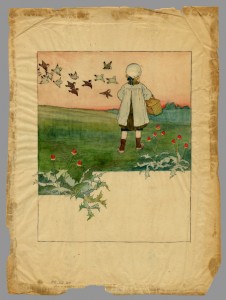 a genre full of detail, delicate color and a sweetness that has disappeared from children’s books almost entirely. I have recently been reading an early illustrated version of Raggedy Ann to my grandchildren and the illustrations are a wonder to behold, compared to later editions of the same work which are highly simplified.
a genre full of detail, delicate color and a sweetness that has disappeared from children’s books almost entirely. I have recently been reading an early illustrated version of Raggedy Ann to my grandchildren and the illustrations are a wonder to behold, compared to later editions of the same work which are highly simplified.
Colborne also did paintings that suggest her deep immersion in the woods, she seems to be standing in the very midst of the forest as she painted these works. We enjoy standing there with her.
Finally, as an end of summer image, I give you this clam digger, an image of people in an activity which I saw out of the train window on the way to the museum.
That gave me a satisfying sense of continuity with the past.
Of course it also reminded me that this was the era of those depressing images of the native peoples of the Northwest that are on many of our ferry boats, the dispossessed native peoples on the shore harvesting the bounty of the Northwest in the midst of their new poverty.
This entry was posted on September 5, 2011 and is filed under Art and Ecology.
Protesting Greed
The Backbone Campaign has completed another Summer Action Camp which culminated in the launch of this sculpture powered by helium balloons and kayaks and floated on Lake Washington in full view of the Paul Allen helicopter port off Mercer Island. The launch of the “mooning” sculpture was accompanied by a second banner declaring the disparity between the top one percent and the rest of us
Getting these banners in the air was not easy. Making these banners at the Action Camp on Vashon was fun, but it helped to be with experts.
First we figured out what we were going to say. Then we projected giant letters ( 8 feet high) onto Tyco fabric painted orange, then we cut it out and sewed it onto a netting. The giant pant sculpture required a lot of sewing on an industrial sewing machine and two huge inflated balloons to hold it up.
Even with a lot of help and skill and knowledge, the project was subject to the whims of nature, as currents and winds, gravity and heat, all created unexpected events. But the protest came off! It concluded with songs, speeches, chants and dances ( The bare ass review).
But the camp lasted for eight days and during that time there was both skills taught like kayaking and tree climbing, as well as protest art making and in depth programs presented by groups like Vida Urbana who are actively protesting evictions of both owners and tenants in Boston
These highly effective organizers give advice to people who have received eviction notices letting them know what their rights are and what the procedure is. They also show up at auctions of houses and heckle buyers.
The United Workers group are calling publicly exposing the abuses of day laborers in Baltimore. They also have brilliant strategies and tactics and are realizing a lot of success in getting better wages for exploited hourly workers who can’t belong to unions. The stories of exploitation among stores on Baltimore’s Inner Harbor in national chain restaurants like Cheesecake Factory, Hooters, Pier 9 and Phillips Sea Food are mind boggling. ESPN Disney shut down with one week warning. Unitedworkers.org organized a protest to demonstrate that developers were getting all the money from taxpayers.
This chart demonstrates that respect for human rights, sustainable practices and public benefits are intersecting actions that lead to a better situation for everyone. These intersections can replace the current top down, divide and conquer approach of corporate developers
In the evening I did a presentation about my book Art and Politics Now, Cultural Activism in a Time of Crisis as well, showing these political activists how effectively artists use art in so many different ways to address political issues. This is my current focus, supported by funding from the Puffin Foundation. See the rest of my website to learn more.
And that was only part of the program for one day! Anyone that attended the whole camp had an intense education in tactics, strategies, and techniques for activism. There were people who had traveled from all over the country to carry ideas back to their own campaigns. That is the idea of “Localize This!” the name of the action camp.
And speaking of organizing, on August 29 in Pioneer Square there was a protest of the Tar Sands with a march to President Obama’s office to ask him not to approve the Keystone pipeline.
Here are some pictures from that event.
I first heard about Tar Sands at last years Backbone Action Camp and did a blog about it then. Do really educate yourself on it read Tar Sands by Andrew Nikiforuk. But try to find a protest right after you read it or you will be really down in the dumps. He covers every aspect of the ecological disaster, human disaster, planet disaster.
Last summer at the Backbone Camp we heard from courageous young activists who were planning on blocking the giant trucks from driving from Lewiston to Alberta. Apparently they had a hundred people lying in the road in Moscow Idaho to continue that protest last week. All across the country people are furious and protesting. Here is a video about the Megaload arriving in Idaho on scenic Highway 12.
Greed must be stopped. The rape of the planet must be stopped. If not we will be stopped by nature. Tornadoes, floods, hurricanes, nuclear spills, oil spills, take your pick. The planet will win in the end. What kind of a future are we giving our grandchildren.
This entry was posted on August 30, 2011 and is filed under Uncategorized.
Porgy and Bess and The Help
The Gershwin Porgy and Bess, all too briefly playing at the Seattle Opera, is stupendous. I read a lot about the history of the opera, the debates about whether it was a musical or an opera, the complaints about the stereotyping of blacks, the protests by blacks during the Civil Rights era that Gershwin’s language as well as the use of “Negro spirituals” and other popular music forms was disrespectful and poorly understanding the spirit of the original.
Forget it all! It is a magnificent story, opera, and staging. The stage is obviously influenced by 19th century American genre artists like Eastman Johnson and Winslow Homer who depicted black life in America ( there are books full of this type of imagery). The setting is a small black enclave on the sea set in the early 20th century. The Gershwin estate requires that the entire cast be African American, the only whites are the policemen, as is appropriate. So one of the reasons the opera isn’t performed more frequently is that if an Opera company has a resident group of singers they are usually mostly white.
So I purposely didn’t read the story before hand and just in case there are other people who don’t know it I won’t give it away. But one shocker is that a New York production is changing the ending to a “Happy” ending for Broadway audiences . The ending, I think, is already happy, it is about love, about hope, about a lot of real life ambiguities, between home and life. The characters, who are accused by the NY production of being one dimensional are far from that, they are layered, contradictory, and full of dignity and passion. Human nature is on full display here also in a community of people that both stand together and display petty prejudice ( against a cripple or a prostitute, or having a good time, for example), who are cowardly and loving, protective and bold. The community has vendors passing through who sell fresh crabs, strawberries and honey on the comb. ( A recent article pointed out that poor people can no longer afford pricey organic food- well poor people produced organic food until recent changes in agriculture).
Also, there are many star singers, in addition to the leads, all of the arias were magnificently done, the choreography was stunning. In “It Ain’t Necessarily so” a piece that might have been choreographed as an almost minstrel piece, the dancing was brilliantly subtle.
All of the singers were passionate and profound in their emotional range, their demeanor and their enactment of the story.
But above all, I loved the Gershwin score: it contained the characters, the drama, the love, the hope, in the music itself. It was transcendent.
I can’t imagine what the NY production will do for music for a different ending since the music is absolutely matched to the story now.
At the same time the movie The Help has just been released. I read the book this summer and thought it was arrogant but intriguing- a white woman taking the voices of black maids, and their stories as the basis of a novel she is writing. It is set in Jackson, Mississippi during the Civil Rights Era. In the movie it is one of the black maids who is the voice over throughout, she becomes the star, shifting the tone. The black actresses do a brilliant job, you can sense they are way more than the sum of the parts of this rather shallow effort of a novel.
The underlying premise of the Help is a white woman recording the stories of black maids in Mississippi in the 1960s. It is an absurd premise. No black maid would have talked openly to a white women at that time.Or even today for that matter. The result is that the stories are sugar coated, the events seem idealized, particularly the ending when Abiline (Viola Davis) loses her job and walks slowly down the street with the plan of becoming a writer. As one friend of mine said, what about the reality of losing a job, of having no money. It is a white woman’s fantasy that walks down that street.
The two stars Viola Davis and Octavia Spencer celebrating the publication of the book The Help to which they contributed anonymously.
I think the author should donate her proceeds to the Southern Poverty Law Center.
Comparing to Porgy and Bess, also a story written by a white writer in the South, it comes off a distant second in terms of empathy. While no white person can possibly be able to understand an African American experience and the ongoing racism in our society, at least in Porgy and Bess, there is a sense of believable humanity. The black maids, as projections from a white mind, are definately much less insightfully drawn. If there were an opera of this story, it would be quite limited in scope. I have been trying to find out if the author ever actually talked to any African Americans maid or otherwise about their experiences. Here is one good review.
In spite of all this Viola Davis and Octavia Spencer are brilliant and compelling. They add a depth that was absent from the novel.
October 19: I am amending this entry because I just read Anne Moody’s Coming of Age in Mississippi. It was published in 1968. It is an astonishing autobiography of the realities of being black in Mississippi in this same time frame. The murder of Medgar Evers in the midst of the civil rights activism of the early 1960s is in both the Help and Moody’s book. In Moody’s account, there were several marches, confrontations with police, people put in jail by the hundreds. Her book is indispensable reading for anyone who wants to understand the incredible courage of the people who participated in the early sixties Civil Rights actions in Mississippi. She herself was part of the historic Woolworth Sit In, and an active organizer with NAACP and CORE. Her book should definately be the movie that is made!
This entry was posted on August 16, 2011 and is filed under Anne Moody, Porgy and Bess, White writers on black experience.
Mary Ann Peters “Poor Liberty” Series at James Harris Gallery
Mary Ann Peters series “Poor Liberty” is based on her outrage, as she stated, at the “cavalier use of the word ‘liberty’ ” by politicians.” Each of the 12 images responds to an article she read in the newspaper. Here is the whole series as installed at the James Harris Gallery until this Saturday:
The images all have the Statue of Liberty as a point of departure, and each print refers to a different violation of the real meaning of the idea of Liberty.
They include censorship-scarecrow , decoy(pictured) target (pictured) , wired, belly dancer (pictured), gagged and bound(pictured) , Jacked, crucified, the committee, frozen, robot, and mummy.
Some of them are very specific, as in “wired”, a reference to the publicized tortures at Abu Ghraib, and elsewhere,”gagged and bound,” another reference to torture, others are more general, as in “Jacked”, a Jack in the Box, the idea of liberty being stuck in a box and popped out at someone’s whim, or”mummy” – the mummification of the true spirit of liberty. “Crucified” refers to the loss of the constitutional separation of Church and State, an idea that seems to have been completely lost sight of today, “the committee” refers to devils and angels at a moment in a moral decision.
The belly dancer is covered in oil, the pursuit of oil is drowning the Middle Eastern culture.
Decoy refers to the stories early in the Iraq war of soldiers sent into war with inadequate equipment.
The entire series is executed in subdues tones of browns with gouache and watercolor on a slick hard surface that allows some movement of the washes, but they don’t soak into the surface. Peters technique is unusual, her choice of close valued sepia related tones is one of her distinctive characteristics. In this case the combination of her fluid technique on a resistant surface seems to exactly correspond to her subject, the manipulation of ideas on a hardened background. It creates certain results that are on the surface of our political world for all to see. But those ideas can also be misinterpreted, misunderstood, underanalyzed, and lacking in depth.
Mary Ann Peters consummate handling of watercolor and gouache allows us to see these twelve images as both extraordinary works of art individually, and a collective statement about our current social condition.
I hope she resumes the themes she included in this 2004 series, because all of the conditions continue to exist and even worsen. For example, target, refers specifically to the targeting of people of Arab descent after 9/11, but the arbitrary targeting of both Arabs and people of color in general for arrest, illegal internment, and deportation is an ongoing concern that I would like to see more artists representing.
This entry was posted on August 12, 2011 and is filed under Mary Ann Peters "Poor Liberty".
Carletta Carrington Wilson’s “Poem of Stone and Bone”
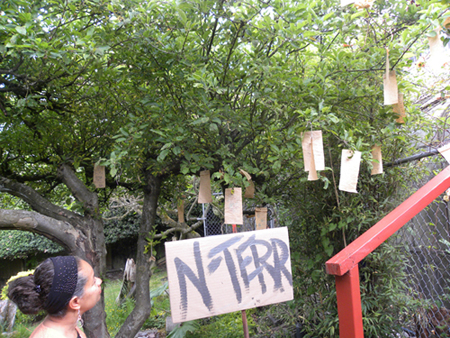
Entrance to the Installation and the Conclusion of the experience with prayers hung on tree by participants
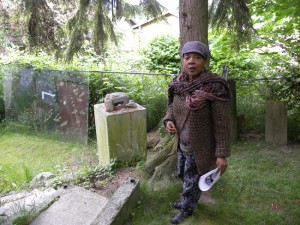
Carletta Carrington Wilson at the beginning of her tour of her installation at the James Washington House at the place where Washington received his stones
Carletta Carrington Wilson’s installation at theJames Washington House in Seattle, in May was provocative and moving. Carrington is a poet, a visual artist, a librarian, an African American, an historian, a writer, and a spiritual person who deeply connected to the spirit of the James Washington House.
“Poem of Stone and Bone” was installed in the garden, the greenhouse, the house, and the studio. In her tour of the installation, Carrington elaborated on the meaning of the various subtle interventions that she created in these places.
First there was the red Bloodline of Time passing through the garden stones and stumps, leading through the garden and into the studio
Then there was the greenhouse turned spirit house, The House Stands Firm, filled with installations of wood and stone.
On the ceiling were rubbings of 19th century embossed books from some of the many books in the library at the Foundation.
In The House Stands Firm were stones and wood found on the property, some of them had been partially worked by Mr. Washington. The egg shells refer to two primary images in James Washington’s art, the bird and the egg.
Next there were soles/souls, a reference to both Washington’s metier as a shoemaker for many years, as well as his spiritual commitment to life beyond the physical world. In his earliest years, his mother apprenticed him to a shoemaker, work at which he immediately excelled and which in some ways forecast his work as a sculptor. because he went on to specialize in orthopedic shoes.
A blue bottle in a tree, referring to the blues, and also warding off evil spirits, was barely visible as we left the garden to go into the studio.
Inside the studio, the model of a slave ship that Washington had collected was given a central position, along with the slave chains that surrounded it – these were key catalysts at the house for the artist long before she began her residency.
The ship, a 15th century Spanish galleon is, according to the artist, ” the key element highlighting the tremendous changes wrought on humans, animals and nature stemming from the West African trade in slaves.”
The artist also enhanced pieces of furniture like the piano with an installation of stones, or bones.
On the way to the lower studio were photographs of Washington with quotes from his autobiography
Carrington recited her poem consisting entirely of the titles of James Washington’s books in his library
Finally, there were her collages based on Frank Leslie’s Illustrated Weekly‘s images of various scenes of the Civil War combined with subtle fabrics.
Here is an example including an image set in the principal square of Savannah, Georgia a year before the Emancipation Proclamation on January 1, 1863
Carletta Carrington Wilson deeply explored Washington’s books, his stones, his garden, his home, his studio, and enriched our experience of all of these dimensions of both his life and his legacy. Yet, she was also absolutely herself as she explored, adding her own responses and feelings, her own aesthetic sensibilities with color, shape, words, and objects. We were left with a sense of drifting back and forth in time from the Civil War to the present, from Emancipation to our current world. Carletta Carrington Wilson gave us continuity with the past and a step into the future. Her installation also gave us a sense of peacefulness and hope, at a time when they are sorely needed.
This entry was posted on August 2, 2011 and is filed under Carletta Carrington Wilson.
Remember Me: Voices of the Silenced in Colombia: Art Exhibition
This exhibition is created by people who are on the front lines of violence in Colombia. The exhibition is being circulated by Witness for Peace Northwest in collaboration with Lutheran World Relief.
“The artists are families and friends of those who lost their lives in the violence. Despite the fact that much of the violence has been fueled by billions of U.S. taxpayer dollars sent to the Colombian military over the past decade, few people in the United States know much about it.” from the brochure
The exhibition had the following categories: The Disappeared, the Displaced, the War and Women, Massacres and the Cruelty of War, A precious Resource at Risk (Children), The War and Children, Silencing the Voices of Change, Assassinated Leaders and Plan Columbia. It concluded with an analysis of Plan Columbia and the sources of violence, as mentioned above in the multi billion dollar “drug war” and other devastating actions like the free trade agreements. There is currently a new Colombia Free Trade agreement on the table that will further “put corporate profits ahead of people and the environment” . Why is this so familiar. But we can at least be educated and resist here in the US. The small farmers and Afro Colombian communities are losing their land and extra judicial killings are carried on with impunity.
While the artists who created the art works in this exhibition are children and adults who are largely working directly from their emotions with only minimal training, famous artists like Fernand Botero have also addressed the same issue as in his painting “Massacre” Also Beehive Collective has made an amazing print about the Plan Colombia. I discuss both of these artists in my book Art and Politics Now, which you can read about on this very website.
This entry was posted on July 25, 2011 and is filed under Art and Activism, Art and Politics Now, Colombia Drug violence, economic imperialism vs democracy.
“Social Security” An art exhibition engages the world
The exhibition Social Security, curated by Deborah F. Lawrence in collaboration with Jayme Yahr, director of the Kirkland Arts Center, is an exhibition that addresses politics from several different directions and in many media. Right at the entrance is a confrontational glass work by Lauren Grossman called Rocker. Two big red heads face off on high poles on a base that rocks back and forth. The open mouths poised in debate or argument, it is hard to say, but since they are red, we can assume , they are vociferous! Just as political debate ought to be in this country.Back in the day that we had political debate.
Nearby are John Feoderov’s sardonic paintings Emergence no 3 and 4. Odd shaped heads back to back, mouths open, but not communicating. They are coming out of cesspool like slime, framed in a snake, probably a cobra who has swallowed a rabbit. His other Emergence painting is equally dark in its world vision, painful to view. These people are anguished and barely surviving.
Another compelling work in the exhibition is Pam Keeley’s Trust Me Here is another large head (Obama’s) with the words Trust Me sealing its mouth, surrounded by a sea of struggling people. Keeley is referring to the election of Obama and the huge sense of betrayal that many people feel over his failure to act on the principles he declared during the election.
Bill Whipple’s wooden sculptures that we can manipulate, such as .CEO, were amusing. As we turned the wheel a cog controls the bent over bodies of two workers: the elite are controlling their oppressions. This theme which can be traced back to Rivera’s Detroit murals of the Ford Motor Company, and other artists, is a Marxist image, although it is little too gimmicky for such an urgent subject.
Charles Krafft creates porcelain weapons and security cameras, sinister and seductive, precious and threatening. See Ai Wei Wei posting for another security camera, that one in marble.
Kevin Wildermuth 27.7 billion dollar bill which lays out the cost of war for Washington State is a straightforward statement that ought to be on a billboard and every Metro bus. I was disappointed it was the size of an actual dollar bill, given how strong the statement is.
Of course Deborah Lawrence’s commanding collages were one of the highlights of the exhibition. Her shredded flag series on old high school maps are potent both politically and aesthetically. Speaking of scale, this is a great scale for her. Lawrence always combines astute critique with a way forward, which is a crucial dimension. Her New Preamble to the Constitution offers what we ought to be doing now, like “sign the Kyoto Treaty,” “Renounce the Drug War” “Ban Racial Profiling” “Provide Health Care for All”
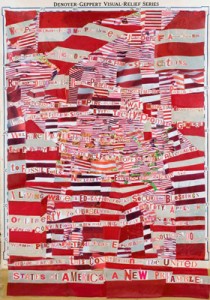
Deborah Lawrence New Preamble 2008 acrylic paper and fabric collage on recycled paper and map on recycled canvas map
Also upstairs is the subtle and beautiful work of Lou Cabeen. Cabeen seduces us with aesthetics, drawing us into “Too Late in Asking: A Litany of Loss” about Mountain Top removal. It records the names of places lost in a green canvas book. The accumulation of loss is deeply moving and underscores the catastrophe of Mountain Top Removal. Although Rainforest Action Network, Beehive Collective and other strong art groups are opposing it, it is still expanding, most recently to Eastern Wyoming, the Powder River Basin. The plan is to export the coal through coastal cities in the Northwest to China in hundreds of railroad cars.
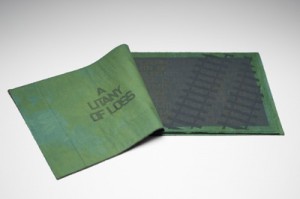
Lou Cabeen Too Late in Asking A Litany of Loss, 2010, hand dyed, painted, and discharged cotton, artist book 16.25 x 38.5
Also included in the exhibition was The Game of Life, several board games that focused on “privilege” “immigration” and racism in a game called “urban ghetto.” Each of these games was provocative and obviously done by artists who really thought about the issues. There were a lot of details. I wish we could have played them and they could be marketed. Although it was fun to look at them, I think the impact of actually playing each one would be much greater.
The glitzy privileged edition of course was the most magnetic, which is why elites in society are so drawn to greed and more and more money.
The show demonstrates yet again how many choices and possiblitites there are for artists who wish to address social issues, humor, sarcasm, games, and just plain political statements framed with aesthetics to make them more powerful.
This entry was posted on July 7, 2011 and is filed under "Social Security Kirkland Art Center Art Exhibition.

